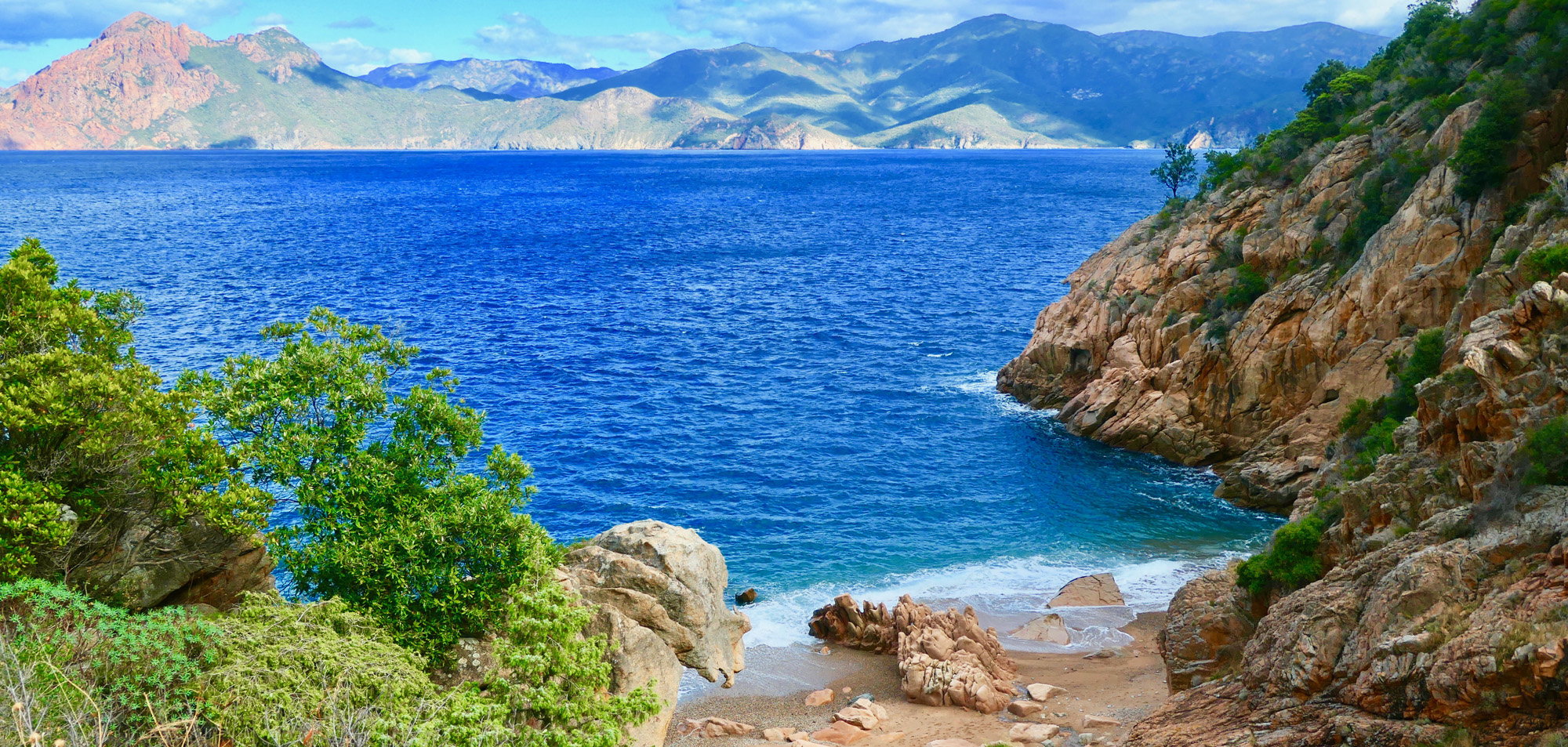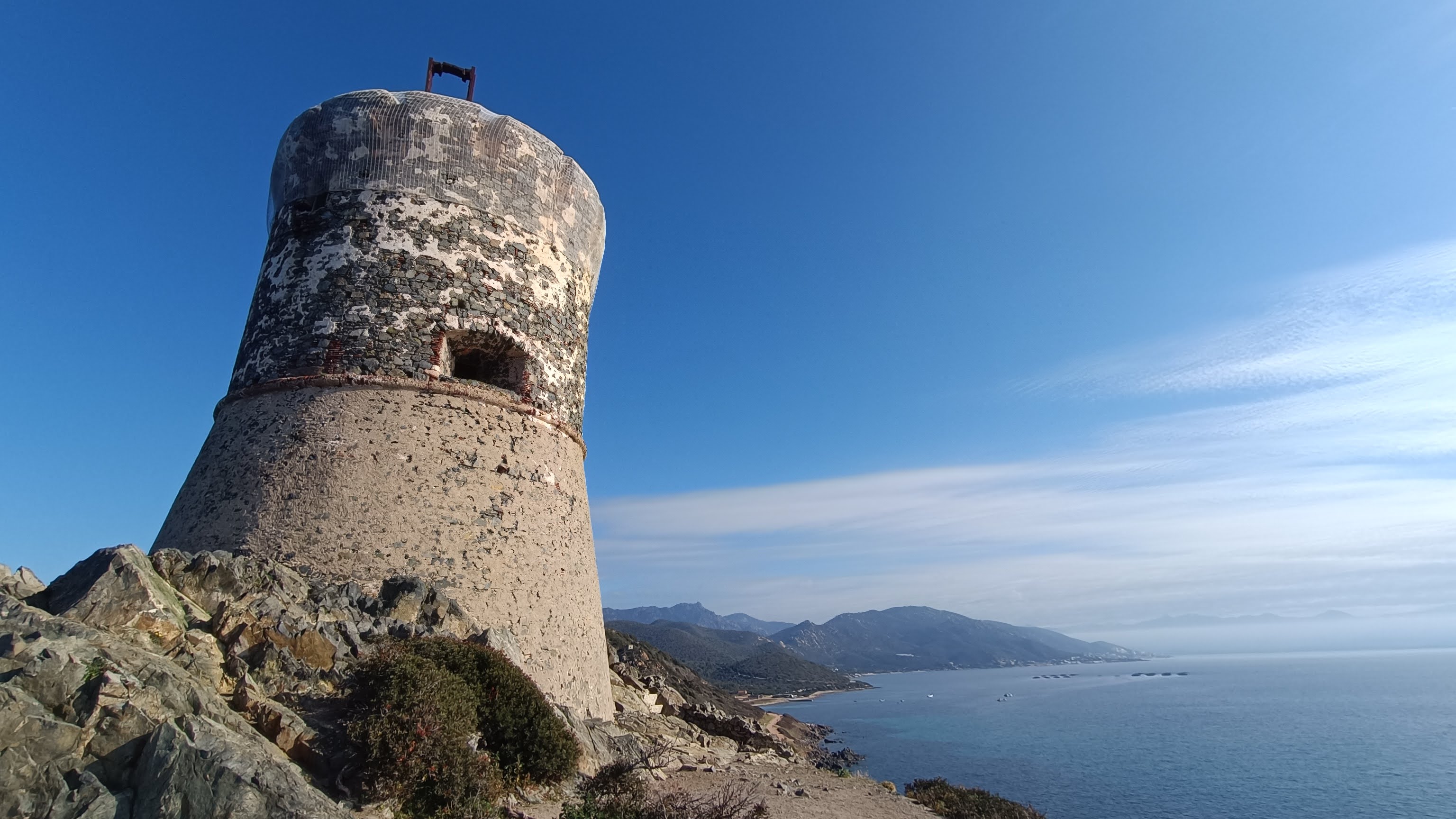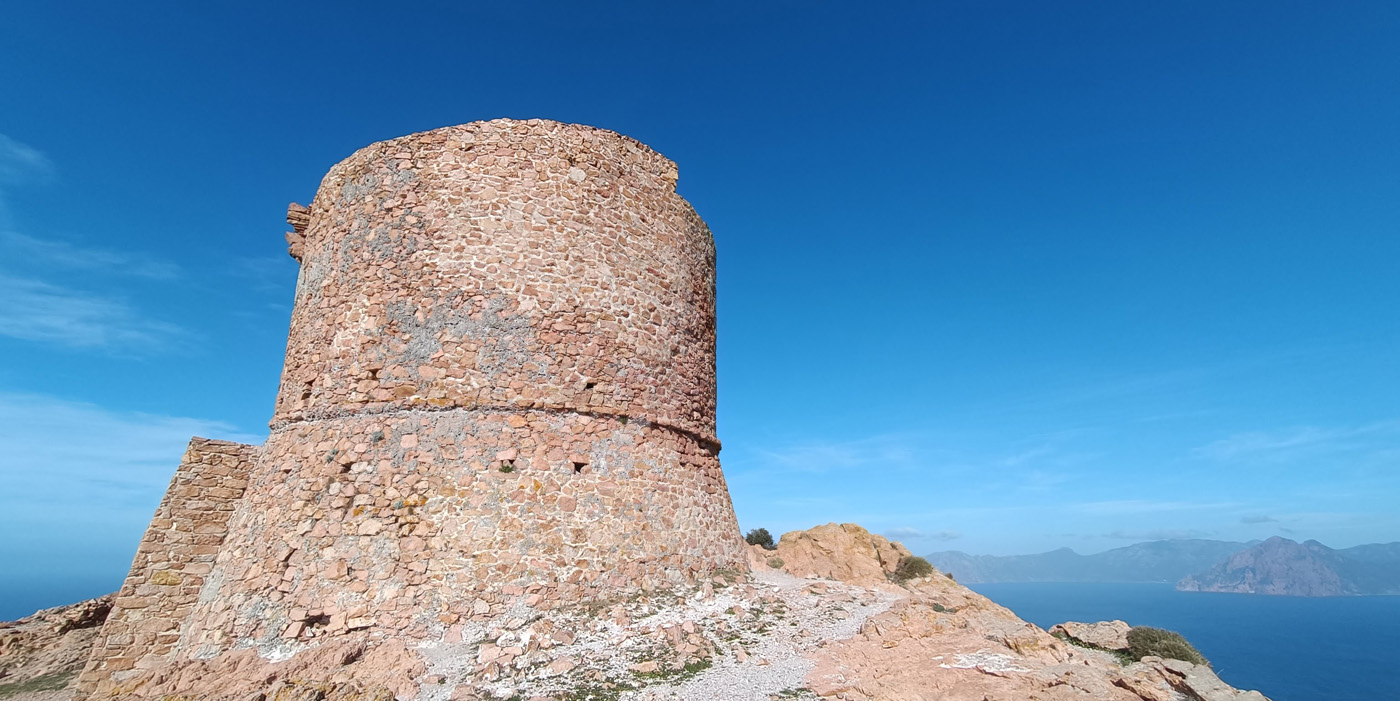
Corsica's Genoese Towers
The Genoese towers, ancient defensive fortresses that crown the island's coastline, are impossible to miss on a walking holiday in Corsica! Although not all of them are of Genoese origin, they are generally referred to as "Genoese towers", without making too much of a distinction. These proud military sentinels dotting the Corsican coastline are strong symbols of the island, and offer a wide choice of walks or longer hikes depending on their geographical location.
Guardians of the coast: the Genoese towers and their legend
Towers with over 500 years of history
The Genoese towers are part of Corsican history, but also part of the symbolism of the Isle of Beauty. For thousands of years, they have lined the seashores, offering splendid panoramic views of the Corsican coastline.
Corsica is a land where people and cultures mix. Its position at the heart of the Mediterranean has exposed it to numerous invasions. Its history is closely linked to the Phoceans, the Carthaginians, the Romans, the Etruscans and the Saracens, but also to the Aragonese, the Turks, the Pisans, the Genoese and, from the 17th century onwards, to France.
In 1453 the Turks took Constantinople, and the Barbary pirates began raiding the coasts, a practice they continued for three centuries. From the 15th century onwards, invasions swept along the Mediterranean coasts, sowing death and enslaving populations.
In the 16th century, at the request of village communities seeking protection from pirates and looting, the Republic of Genoa began building dozens of fortified towers.
Each of these fortified towers was then strategically placed all along the Corsican coastline. The Genoese towers had to be able to communicate with each other using fire signals.
In 1530, Corsica had twenty-three towers, including ten on Cap Corse.
In 1735, there were more than a hundred towers, but to this day, only 67 Genoese towers have survived and are still visible. Some of them have been renovated, while others have been abandoned.
Role and function of the Genoese towers
The towers have been assigned several roles. One of the main ones was to keep watch over the sea and defend the coast against barbarian invasions, which involved pillaging and deporting people into slavery.
Day and night, with fire and cannon fire, they could warn of imminent danger.
The towers also had a commercial function, monitoring anchorages and checking goods being transported. It can therefore be said that the Genoese towers also played a real role as customs posts controlling trade.
They also acted as health posts, preventing ships without health reports from docking, thus averting some major epidemics.
Characteristics of a Genoese tower?
Most of the towers on the Corsican coast date back to the time when Corsica was part of the Republic of Genoa, hence their widespread appellation of Genoese towers. The architecture of the towers bears witness to Genoese expertise in military construction.
The vast majority are round, although a few are square, although it seems that the circular shape was favoured for defensive reasons.
What all these coastal towers have in common is that they are fortified dwellings housing a garrison of 2 to 6 lightly armed men. These guards were known as "i torregiani".
- Height between 12m and 17m, diameter between 8m and 10m.
- Basement: a storeroom or cistern
- First floor: a rest room
- Second floor: guard room
- At the top: a terrace
The stones used to build the towers (granite, limestone, schist, etc.) vary according to the geology of the area, with schist towers in Cap Corse and granite towers in the south.
One of the most famous Genoese towers is the Parata tower on the Sanguinaires islands in the Gulf of Ajaccio, which is a listed historic monument.
Some ideas for walks to Genoese towers
Omigna Tower in Cargèse
The tower is built from porphyroid granite, a rock that is part of the surrounding landscape and confirms that the stones were cut on site. The tower has been completely restored. Situated on the Omigna headland, the tower offers a superb view of the gulfs of Peru to the south and Chiuni to the north.
Access: 1h30 walk there and back from the car park on the road towards Peru beach.
Features: diameter 34m, height 12m.
Capu di Muru Tower
Access to the interior of the tower is via an outside staircase that was renovated in 1999. The main room has a beautiful cobbled floor, a granite dome, a large fireplace and a wood-burning oven. From the terrace, there is an exceptional view over the Gulf of Ajaccio, hence the importance of its strategic location.
Access: 1h30 walk there and back from the car park on the road towards Capu di Muru.
Features: diameter 7.40m, height 15m.
Campomoro Tower
The Campomoro tower closes off the Gulf of Valincu, which it dominates at an altitude of 78 metres. The view from here is exceptional. To the north are the towers of Capriona, Micalona and Calanca. Much further away, the Capu Neru tower stands out. Of the many towers built during this period on the Corsican coast, it is the largest.
Access: 30-minute walk there and back from the car park on the road towards Capu di Muru.
Features: diameter 13 m, height 15 m.
The Girolata fort
The tower and fortress of Girolata lie to the north of the Gulf of Porto. The square tower, imposing and massive, was built around the middle of the XVIᵉ century. It forms part of a fortified enclosure that makes up the fort of Girolata. With its sentry box as the main entrance, its configuration makes it resemble a small citadel. The Gulf of Porto-Girolata has been designated a World Heritage Site by UNESCO. Girolata, like the Elbo and Gargali towers, is part of the protected and prestigious Scandola site.
Access: 3h30 walk there and back from Bocca à a Croce on the D81.
Features: the tower is made up of two buildings (Torre Grande and Torre Mezza) on three levels. A chapel was built within the enclosure, with a powder magazine below.
Other Genoese towers to discover in Corsica
Elbo, Gargali, Porto, Orchinu, Cargèse, Sagone, Capigliolu, Ancone, Pelusella, Capu di Fenu, Parata, Castellucciu, la citadelle d'Ajaccio, Capitellu, Isulella, Frassu, Castagna, Capu Neru, Capanelle, Capriona, Micalona, Calanca, Senetosa, Tizzà, Roccapina, Olmetu, Caldarellu, Bunifaziu la citadelle, Sant'Amanza, Sponsaglia, Porto Vecchio la citadelle, Cala Rossa, San Ciprianu, Pinareddu, Fautea.

